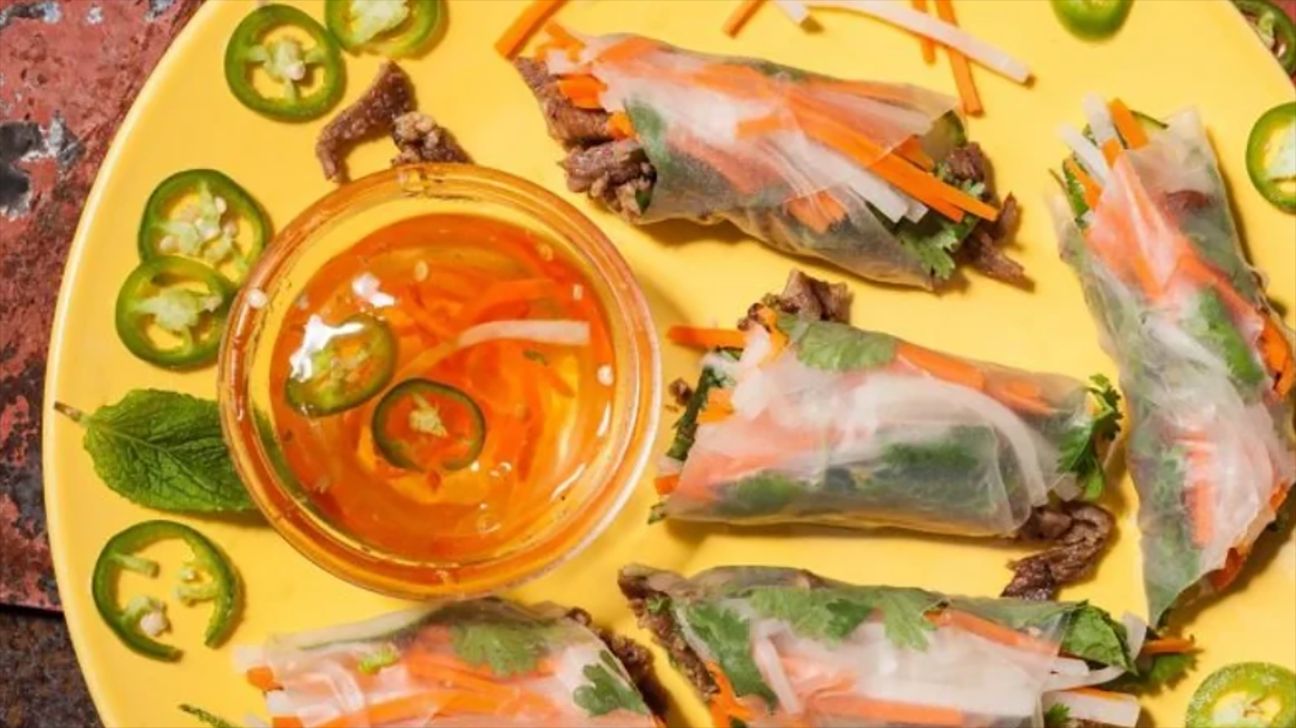We include products we think are useful for our readers. If you buy through links on this page, we may earn a small commission. Here’s our process.
Greatist only shows you brands and products that we stand behind.
Our team thoroughly researches and evaluates the recommendations we make on our site. To establish that the product manufacturers addressed safety and efficacy standards, we:- Evaluate ingredients and composition: Do they have the potential to cause harm?
- Fact-check all health claims: Do they align with the current body of scientific evidence?
- Assess the brand: Does it operate with integrity and adhere to industry best practices?
Plus, what you should order, from banh mi to pho.
If you’re new to Vietnamese food, you’re in the right place. We asked the queen of Vietnamese cuisine—Andrea Nguyen, prolific cookbook author, James Beard Award winner, and Vietnamese-born—to break down the flavors and dishes Vietnamese newbies should look for.
If you’re not already eating Vietnamese food on the regular, it’s definitely time to add it to your culinary repertoire. Especially if you’re a fan of Thai food, falling in love with the cuisine of Vietnam is an easy—and natural—jump. That’s because while the signature dishes are starkly unique, both of these South Asian countries use many of the same ingredients, just in different ways.
Whether you’re a noodle freak, dumpling lover, soup slurper, or like digging into a mound of rice, you’ll find something to tickle your palate.
So order from your local spot this week—and use this guide to help you decide what to get (and how to pick the best place too).
You’ve probably heard the word “umami” thrown around by chefs, foodies, and foodie-wannabes. It’s what some consider the fifth basic taste—alongside sweet, salty, sour, and bitter—and it’s an indescribable savory flavor that adds depth and richness to a dish.
In Vietnamese food, fish sauce is the foundation for building umami that leaves you wanting more, and is used in stir-frys, soup broths, dipping sauces, you name it; it’s often punctuated by raw fresh herbs such as cilantro or Thai basil, and spicy chilies.
“Those basic components of Viet cooking often surprise people who are unfamiliar with it,” says Nguyen. “But it’s what really makes Viet food like a series of gentle, beautiful rolling hills, as opposed to Thai food, which is lusty and gutsy.”
Pho is a noodle soup that’s synonymous with Vietnam, and Nguyen says it’s perfect for Vietnamese novices. “This is a terrific gateway dish because it’s tasty and customizable.” Rice noodles are plopped into a bowl of clear but flavorful broth, then piled high with the protein of your choosing (beef, chicken, seafood, tofu), bean sprouts, basil, mint, cilantro, onions, and sometimes other veggies; squeeze some lime over the top and a squirt of Sriracha or other chili sauce if you like it spicy. Don’t neglect Vietnam’s other favorite soup, though—be sure to try bun bo hue!
Carb lovers, this one’s for you—banh mi is a classic Vietnamese sandwich that’s another great gateway dish, and it’s pretty darn addicting. A soft-on-the-inside, crusty-on-the-outside baguette is spread with mayo (and traditionally pate), then loaded up with pickled veggies (typically carrots and daikon, a mild type of radish), cucumber, chilies, cilantro, and whatever protein you’re craving—we’re talking decadent pork belly, roasted or minced pork, and even chicken, sardines, or tofu.
Goi cuon (often called summer rolls on American menus) is a light but flavorful dish, typically served as an appetizer but delicious enough to gorge on for lunch or dinner. “Chewy, translucent rice paper typically encases lettuce, herbs, rice vermicelli noodles, and thinly sliced shrimp, pork, or tofu,” Nguyen explains. Depending on the restaurant, they’re often served with a peanut or sweet chili dipping sauce (featuring fish sauce, of course!).
…there are plenty of Vietnamese rice dishes to try. If you’re just starting out, look for dishes that feature succulent grilled or barbecued meats, served alongside a mound of rice or pile of skinny, angel hair-esque vermicelli rice noodles. Fresh cucumber, herbs, and pickled veggies are also common accouterments.
“Look for a focused, relatively tight menu,” advises Nguyen. “Any restaurant with a large menu that’s more than two pages is often over-ambitious.” She also suggests trying the joint’s signature dish, if they have one—if it lives up to the hype, you know you’ve found a winner.
“Enjoy Viet food the way you decide you like to. There are few rules—depending on the dish, you may eat it with chopsticks, spoons, forks, or your hands,” she says. “Don’t be afraid to ask people for help if you don’t understand something. Vietnamese people are proud of their cuisine and you’ll make quick friends while learning something new.”
If you want to tackle Vietnamese in your very own kitchen, Nguyen says pho is the way to go. “If you can boil water, you can make pho! Seriously. I’ve written a whole cookbook on pho that has quickie versions as well as long, traditional simmers.”
Check out Viet World Kitchen for information on more of Nguyen’s cookbooks, cooking classes, regular blog recipes (like kimchi fried rice and mapo tofu lasagna!), or to ask her a question yourself.

